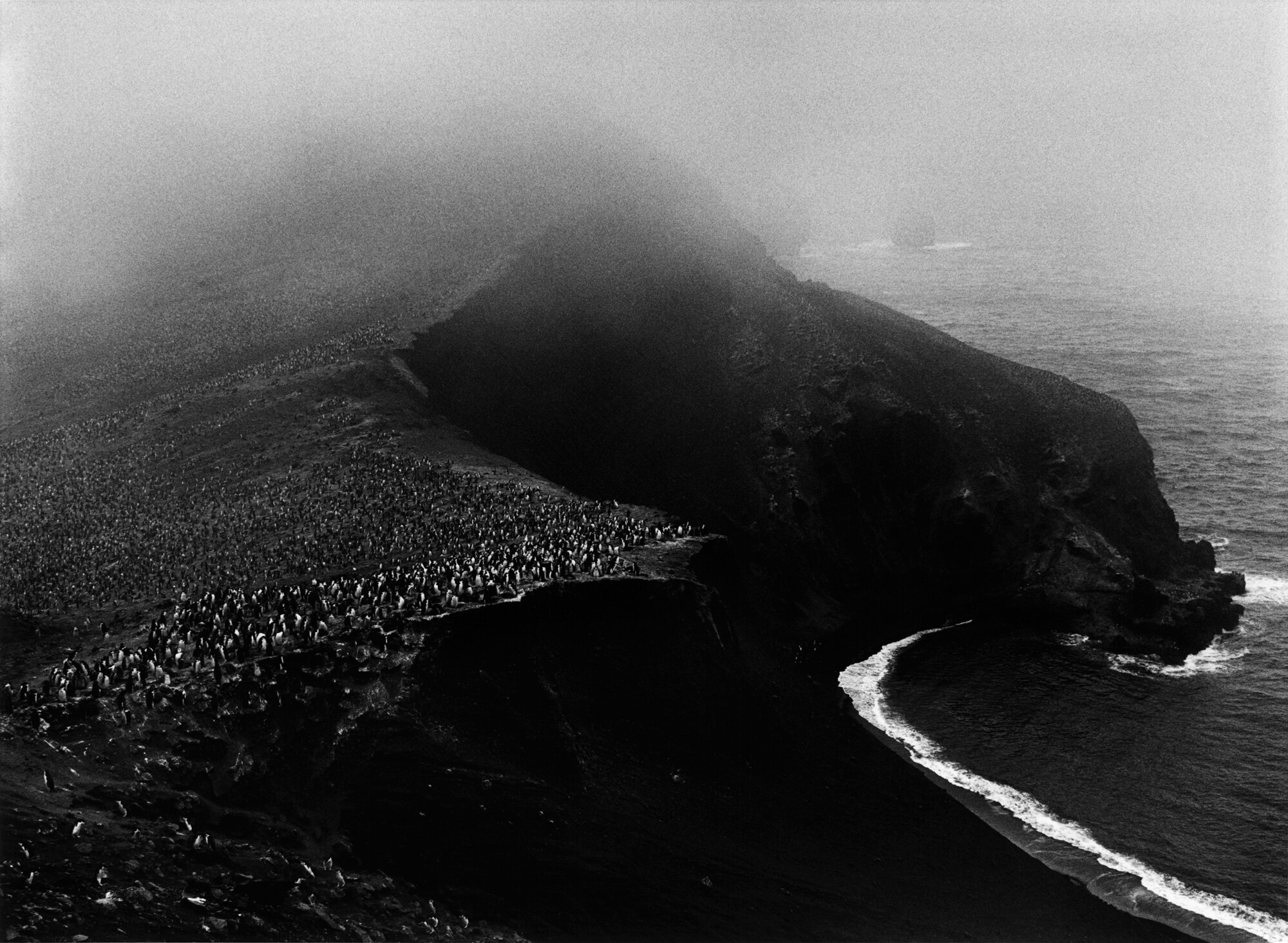From Our Archives: SEBASTIÃO SALGADO: SCRATCHING THE SURFACE
Sebastião Salgado. Genesis: Colony of Chinstrap Penguins, Bailey Head, Deception Island, Antarctica, 2005.
This article was featured in issue No. 15 - Place
by John Hutt
Sebastião Salgado is observably good at everything he does. He is an exemplary photographer. He has, until recently, used large format cameras to capture pristine pictures of difficult subjects with an undercurrent promoting social consciousness. They beg consideration to be crowned as perfect. His photographs are as clear and big and scary in their scope as in their implication. The images are infused with empathy and respect for his subjects, man or beast. Salgado even steps out from behind the camera and regrows rainforests, an attempt to save humanity from itself.
Sebastião Salgado. Other Americas: Candy Apples, The Outskirts of Guatemala City, Guatemala, 1978.
Salgado spends months with his subjects before he snaps the shutter. Steeped in photographic learning, they offer immediate aesthetic enjoyment and infinite detail for those who care to look. To find fault in his compositions is an arduous affair. In between fundraising for his most recent projects and lecturing on how a little solidarity can turn the world away from the path of man-made construction, he is a goodwill ambassador for UNICEF.
Salgado exposes not destruction, but rather beautiful environments, with a solemn understanding of the impending destruction if there is to be no change in protocol. He frames scenes of decay saturated by pedestrians or showered with oil. He frames scenes sparsely populated, dotted only by the noble poor or the indigenous hunters tending to their work. He frames an unending stream of gold miners tearing the earth apart. x
“[T]he real beauty of Salgado comes out when the viewer examines the picture
for more than just the immediate flawless aesthetics.”
Laborers are cleaving the earth in support of man’s toxic greed, but Salgado makes an image more akin to propaganda extolling the virtues of industry than a documentation of its horrors.
His work remains immune to irony and fatalism, and though he has arrived at old age, his flair for high contrast black and white, large format photography and a huge budget will not be sun-downing any time soon.
In all likelihood, there exists no textbook on photography which excludes his work. Salgado’s gallerist thought he was staring at an Ansel Adams archive when he saw Salgado’s most recent landscapes: perfectly framed, adhering to the rule of thirds and with a clear point of focus.
Sebastião Salgado. Oil wells firefighter. Greater Burhan, Kuwait, 1991.
It is unfair to criticize Salgado because his prints find a home on the walls of offices, hotels and gallery walls. It is not his fault that his work will appreciate in value, beloved by the kind of arch-capitalist that can afford them. Salgado has faced criticism that some of his shows, like his Genesis exhibition at the Natural History Museum in 2014, are backed by those who fund the violent scenes his camera captures. None of the criticism he experiences can or will stick. He can step off the stage of a TED talk having inspired hundreds of millionaires to save our dying planet, and only a few of the millionaires doing the damage can make the necessary difference.
Why do these pictures which teem with life, respect, flawless execution and textbook ‘fine art photography’ ring so hollow? Salgado shoots people and animals with an eye for what they represent.
Read the rest of the article in Musée Magazine's issue No. 15 - Place







